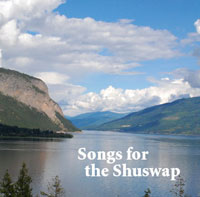SHUSWAP WATERSHED PROJECT
Comprehensive Shuswap ethnology now available
Click here to find the link: The Shuswap by James Teit
January 30, 2015
The most authoritative treatise every written about the Shuswap people is now available thanks in part to the Shuswap Watershed Project. Famed ethnologist, James Teit’s book, The Shuswap, was originally published in 1909 as Part VII of The Jesup North Pacific Expedition, edited by Franz Boas and published as a Memoir of the American Museum of Natural History. Teit’s work has served as an essential reference for every book written about the Shuswap peoples since and yet the only copies of the book available for public use were in the Kamloops Library reference section and the Secwepemc Museum.
Another of Teit’s works on the Thompson Indians, which was Volume One of the Jesup Expedition series, was re-published as a paperback by the Nicola Valley Museum Archive Association in 1997.
“Ever since I managed to get a photocopy of The Shuswap in the late 1980s for research, I have wanted to see this 346-page book become more assessable for students, researchers and the public,” explained Jim Cooperman, Shuswap Watershed Project coordinator and local historian. “We were in the process of making this important book available online as a PDF file when I learned that the American Museum recently uploaded it, and now we have also made it available at shuswapwatershed.ca,” he elaborated. In addition, a printed copy has also been gifted to the Salmon Arm library.
As well, there will be a link soon at salmonarmmuseum.org and R. J. Haney House Heritage Village and Museum Curator Deborah Chapman exclaimed, “I was thrilled to learn about this digital copy of a very fragile resource we have in our archives at the Salmon Arm Museum. Teit’s study is now easily accessed from any computer connected to the web! Finally, everyone has the opportunity to learn about the indigenous people of the Shuswap from a much respected and valuable primary source.”
The 346-page book consists of 15 chapters that cover nearly all aspects of their lives, including social structure, clothing, subsistence, warfare and religion. The last two chapters provide 107 myths, the ancient oral legends that were passed down from generation to generation and contain many of the teachings that both guided and entertained families through the ages.
In the preface to the book, Teit explains how the description of the Shuswap was the result of studies he made at the request of Dr. Frank Boas during exploration trips made from 1887 until 1904. He collected the bulk of his information from several old men in the vicinity of Canoe Creek and Dog Creek in the Chilcotin country and especially from a very intelligent old man called Sixwi’lexken, who was born near Big Bar. Since his book is based on interviews with elders who lived to the north and west of the Shuswap, one should be aware that the information provided may not fully typify the ancient lifestyles of the local Lakes Division of the Shuswap Nation.
“I hope that one day funding can be found to re-publish Teit’s Shuswap ethnology as a soft-cover book so that it can be made even more accessible to students and the public,” added Cooperman. “Hopefully, making the book available online will help raise awareness of the importance of this key resource,” he added.
Contact:
Jim Cooperman, Shuswap Watershed Project, 679-3693
Deborah Chapman, Curator, Salmon Arm Museum, 832-5453


